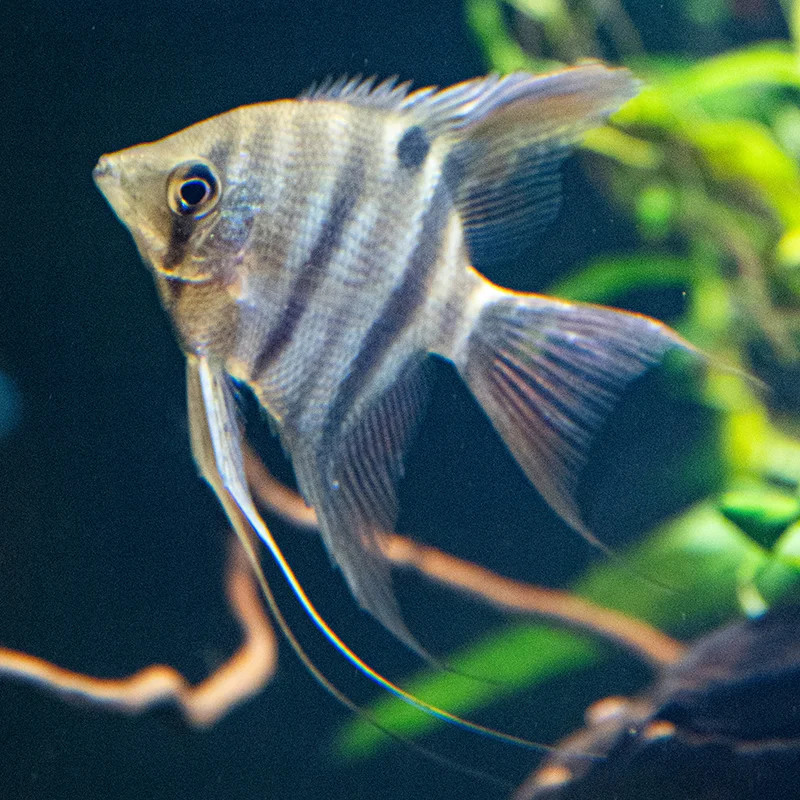Stocks Available
Blue Angelfish
SKU:120930
PTEROPHYLLUM SCALARE
1.61-1.77 INCH

Stock Available
Introduction: • Species: Leopard Angelfish • Common Names: Leopard Angelfish • Natural Habitat: Native to slow-moving rivers and flooded areas in the Amazon Basin, South America, where vegetation is dense, providing plenty of hiding spaces. Physical Characteristics: • Appearance: Known for their unique spotted pattern resembling leopard print, these angelfish have a tall, triangular body with long, graceful fins. • Size: Grows up to 6 inches (15 cm) in length. • Lifespan: Average lifespan is 8-10 years with optimal care. Habitat Requirements: • Tank Size: Minimum of 20 gallons for a pair; larger tanks are recommended for groups. • Water Conditions: o Temperature: 75-82°F (24-28°C). o pH: 6.5-7.5. • Aquascaping: Provide tall plants, driftwood, and hiding places to mimic their natural habitat, along with open swimming spaces. Diet: • Primary Diet: Omnivorous; in the wild, they consume small insects, larvae, and plant matter. • Supplemental Feeding: Offer high-quality flakes, pellets, and occasional live or frozen foods such as bloodworms and brine shrimp. • Feeding Frequency: Feed small amounts two to three times a day. Compatibility: • Temperament: Peaceful, though they can become territorial during breeding or if kept in smaller tanks. • Suitable Tank Mates: Compatible with other peaceful species of similar size, like tetras, rasboras, and peaceful catfish. • Incompatibilities: Avoid aggressive or fin-nipping species, as well as overly small fish that might be seen as prey. Care Level: • Difficulty: Moderate; requires stable water parameters and a balanced diet for long-term health. • Health Monitoring: Watch for signs of fin rot, parasitic infections, and other common fish diseases. Breeding: • Breeding in Captivity: Possible under the right conditions; pairs form strong bonds and clean flat surfaces for egg-laying. • Spawning: Parents often protect the eggs and tend to them until they hatch. Economic Considerations: • Market Demand: High due to their distinctive appearance and striking leopard-like pattern. • Wholesale Pricing: Typically priced higher than standard angelfish due to their unique coloration. • Retail Pricing: Reflects their rarity and desirability, usually falling into the moderate to high price range. Sustainability and Conservation: • Wild Population: Generally stable, though habitat degradation poses potential threats. • Aquaculture Efforts: Most Leopard Angelfish in the trade are captive-bred, reducing the need for wild-caught specimens. • Regulations: Ensure compliance with relevant regulations on the trade of ornamental fish. Conclusion: Leopard Angelfish are a captivating addition to freshwater aquariums, admired for their spotted appearance and elegance. With proper care, including stable water conditions and a varied diet, these angelfish can thrive and bring beauty to aquariums for many years, making them a favorite among enthusiasts.
Data sheet
13 other products in the same category: